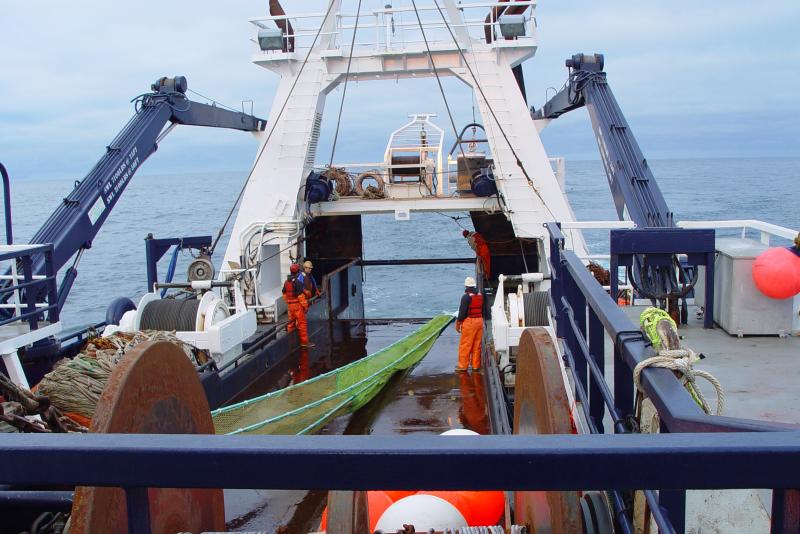Pelagic or forage fish species are an important source of food for marine predators in the eastern Bering Sea. This group of fish includes capelin, Pacific herring, juvenile chum salmon, juvenile pink salmon, juvenile sockeye salmon, and walleye pollock during their first year of life.
A new study by scientists at the Alaska Fisheries Science Center shows variable effects on species distribution and abundance. It looked at several warm periods from 2002–2018 when ocean temperatures were warmer than average for four or more consecutive years.
Previous studies by NOAA Fisheries documented a northward shift in age-0 pollock, juvenile salmon, herring, and capelin during the 2002-2005 warm period relative to the 2006-2011 cool period in the eastern Bering Sea.
“However, this is the first study to look at temperature-related changes in the distribution and biomass (total average weight of all fish) of pelagic fish over multiple warm periods,” said Ellen Yasumiishi, researcher, Alaska Fisheries Science Center and lead author for the study. “Studies like this are also important for understanding factors that may affect juvenile salmon and age-0 pollock growth, development and ability to reach maturity. As adults these fish are targeted by commercial, recreational, and subsistence fisheries in Alaska.”
Study Results
During late summer from 2002–2018, scientists collected juvenile and small fish using surface trawl nets and measured sea surface temperatures in the eastern Bering Sea. Summer sea surface temperatures were relatively warm from 2002 to 2005, cool from 2006 to 2013 (with the exception of 2007), and warm again in 2014 to 2018.
The general distribution and biomass of the six pelagic fish species in the study varied over time and space across the eastern Bering Sea shelf from 2002–2018. Yasumiishi and colleagues found that ocean surface warming corresponded with
- A more northerly distribution for capelin and juvenile sockeye salmon
- Key areas of higher densities of capelin were around St. Lawrence Island and south of Nunivak Island
- Juvenile sockeye salmon were found primarily in the middle of the continental shelf throughout the eastern Bering Sea
- Juvenile chum salmon were in nearshore and middle shelf waters
- Herring were primarily distributed nearshore in Norton Sound and around Nunivak Island but were also found broadly across the northeastern Bering Sea
- Age-0 pollock were found primarily in middle and nearshore regions of the southeastern Bering Sea and in the middle shelf area of the northeastern Bering Sea
They also noted that biomass of four of the six species were significantly related to summer sea surface temperature in the eastern Bering Sea. Capelin biomass decreased while herring, age-0 pollock, and juvenile sockeye salmon biomass increased during warm periods. Juvenile sockeye salmon, a southerly-distributed species in the survey area, appeared most sensitive to warming. For this species there are strong relationships between warming sea temperatures and increases in their abundance, and more northward distribution.
“We know that sea surface temperature directly and indirectly affects marine species at different stages of their development, but it is likely just one piece in a complex puzzle. Clearly there are many factors that can influence marine species growth, development, and survival,” said Yasumiishi. “NOAA Fisheries has a long history of studying marine ecosystems in Alaska. It’s critical that we continue to monitor and analyze data so that we can stay on top of changing ocean conditions. This will enable us to provide resource managers and commercial and subsistence fishers information on expected distribution and biomass for use to make sustainable resource management decisions.”
Aspects of the ecology of the early life of fish are often important in determining the number of fish available to fishers. Currently, these surveys estimate abundance of juvenile pink and Chinook salmon to predict returns of salmon to fisheries.
Future studies are planned to examine the relationship between early life history distribution and biomass of pelagic fish in relation to survival and recruitment. Specifically, scientists hope to learn more about Bristol Bay sockeye salmon. In identifying factors that affect distribution and abundance of forage fish, scientists hope to also gain further insights into understanding the ecology of marine mammals, birds, and other fish species who feed on these species.





